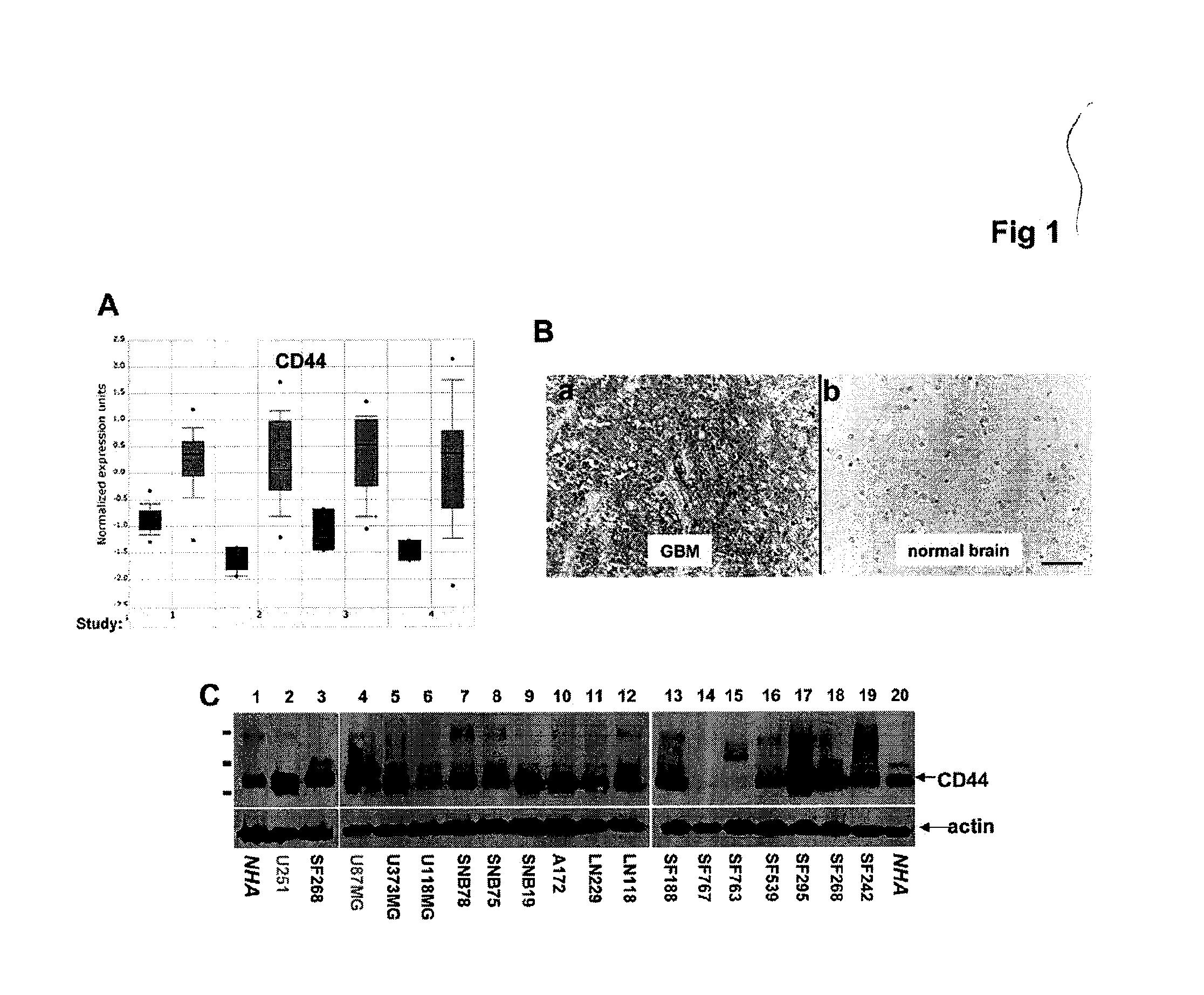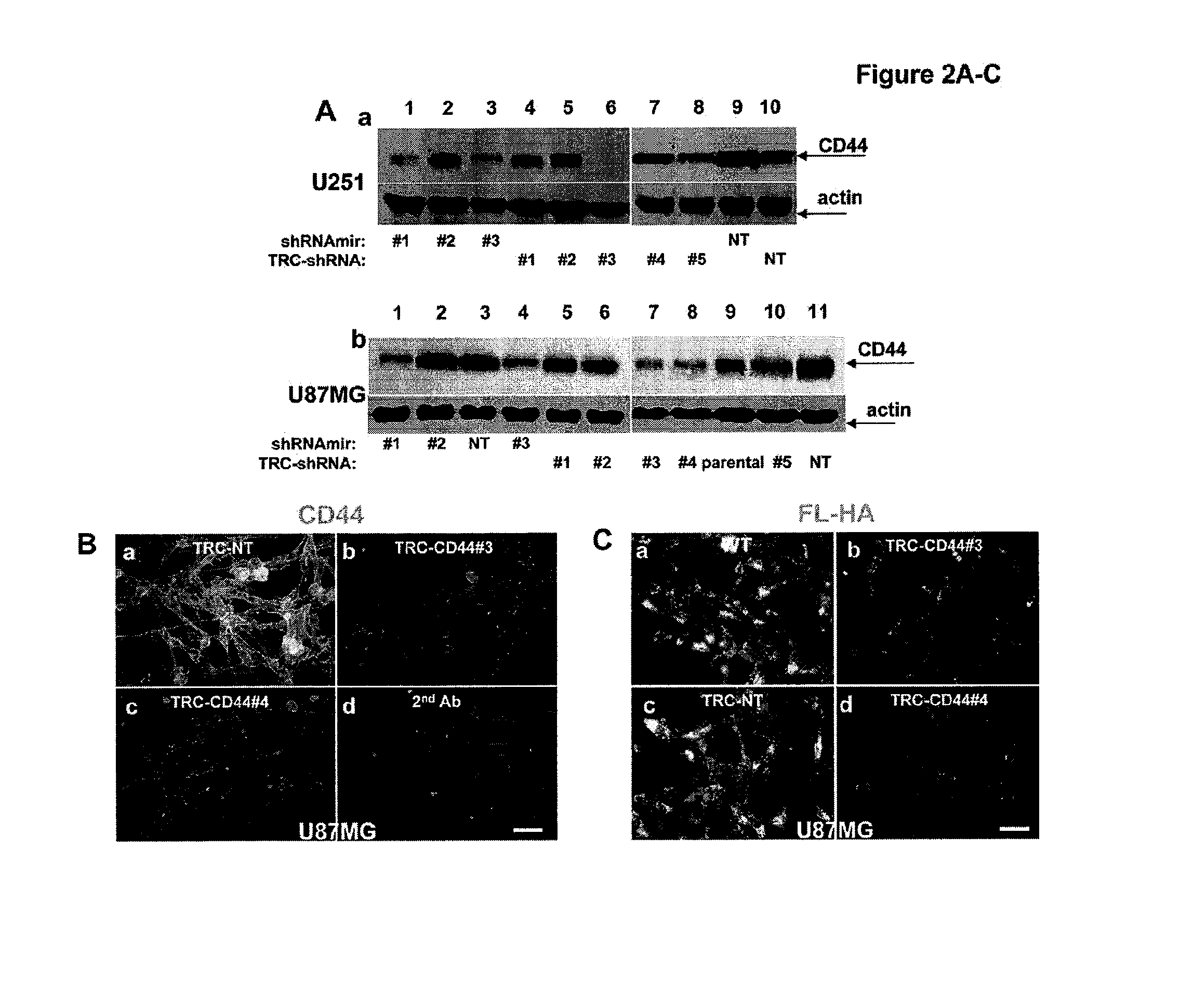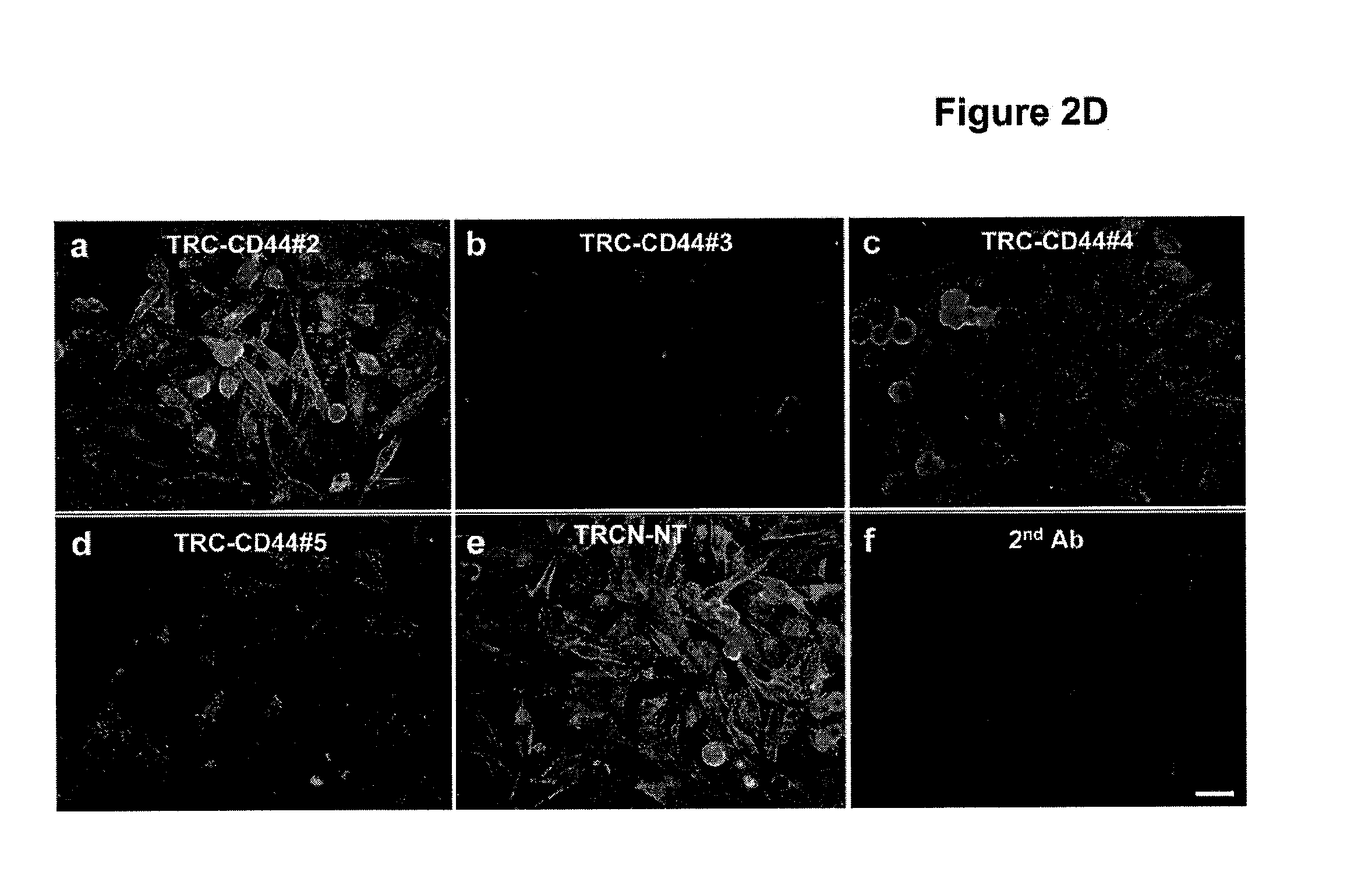Methods of using CD44 fusion proteins to treat cancer
a technology of fusion proteins and cancer, applied in the direction of cd44, drug compositions, peptides, etc., can solve the problems of limited efficacy, imposing serious toxicity, and limited effect of conventional chemotherapy
- Summary
- Abstract
- Description
- Claims
- Application Information
AI Technical Summary
Benefits of technology
Problems solved by technology
Method used
Image
Examples
example 1
CD44 is Upregulated in Human Glioblastoma Multiforme (GBM)
[0283]To determine the expression level of CD44 in GBM, available gene expression datasets at www.oncomine.org were mined. In four independent datasets, CD44 transcripts were consistently upregulated in human GBM compared to either normal brain (FIG. 1A, studies 1, 2, and 4) (Bredel et al., 2005; Liang et al., 2005; Sun et al., 2006) or normal white matter (FIG. 1A, study 3) (Shai et al., 2003). Immunohistochemistry of paraffin sections of primary tumors showed that CD44 is upregulated in all 14 GBM cases analyzed compared to eight cases of normal human brain (FIG. 1B).
[0284]To address the role of CD44 in glioma growth and progression, expression levels of the CD44 protein in a variety of human glioma cell lines were analyzed. Human glioma cell lines were derived from ATCC, UCSF, and NCI-DCTD Tumor / Cell line repository in Frederick. The majority of human glioma cells tested express higher levels of CD44 than normal human astr...
example 2
Lentiviral Based shRNAs Effectively Knocked Down CD44 Expression in Human Glioblastoma Multiforme (GSM) Cells
[0285]To knock down endogenous CD44 expression effectively in U251 and U87MG cells, a set of human CD44-specific TRC-shRNA (shRNA-TRC-CD44#1-#5) and shRNAmir (shRNAmir-CD44#1-#3) constructs (Open Biosystems) were screened. Non-targeting control shRNAs (shRNA-TRC-NT and shRNAmir-NT) were included in the screen as negative controls. These shRNA vectors were lentiviral-based and contained the internal ribosome entry site (IRES) / GFP and / or puromycin-resistance gene located at the 3′-termini of the shRNA inserts. The IRES element in the shRNAmir construct ensures that all the puromycin-resistant cells express the inserted shRNAs and allows use of the GFP expression level as an indicator of the shRNA expression efficiency. Lentiviruses containing these shRNA constructs were used to infect U87MG-Luc and U251-Luc cells that had been transduced with and expressed luciferase. Luciferas...
example 3
Depletion of CD44 Expression Inhibited Subcutaneous Growth of U87MG and U251 Cells by Inhibiting their Proliferation and Promoting Apoptosis In Vivo
[0286]Pooled populations of the transduced U87MG and U251 cells that displayed different degrees of CD44 depletion were first used in subcutaneous (s.c.) tumor growth experiments to determine how reduced CD44 expression affects glioma growth in vivo. Reduced CD44 expression in these cells correlated with reduced tumor volumes 5 weeks following injection of the GBM cells (FIG. 3A-B). Growth curves of tumors derived from the glioma cells infected with control non-targeting shRNAs, shRNA-TRC-NT and shRNAmir-NT, or two CD44-specific shRNAs that effectively knock down CD44 expression, shRNATRC-CD44#3 and shRNAmirCD44#1, further demonstrated that CD44 depletion significantly inhibited subcutaneous glioma growth (FIG. 3C-D). To begin to address the mechanisms underlying the growth inhibitory effect of CD44 knockdown, proliferation and survival ...
PUM
| Property | Measurement | Unit |
|---|---|---|
| molecular weight | aaaaa | aaaaa |
| molecular weight | aaaaa | aaaaa |
| molecular weight | aaaaa | aaaaa |
Abstract
Description
Claims
Application Information
 Login to View More
Login to View More - R&D
- Intellectual Property
- Life Sciences
- Materials
- Tech Scout
- Unparalleled Data Quality
- Higher Quality Content
- 60% Fewer Hallucinations
Browse by: Latest US Patents, China's latest patents, Technical Efficacy Thesaurus, Application Domain, Technology Topic, Popular Technical Reports.
© 2025 PatSnap. All rights reserved.Legal|Privacy policy|Modern Slavery Act Transparency Statement|Sitemap|About US| Contact US: help@patsnap.com



